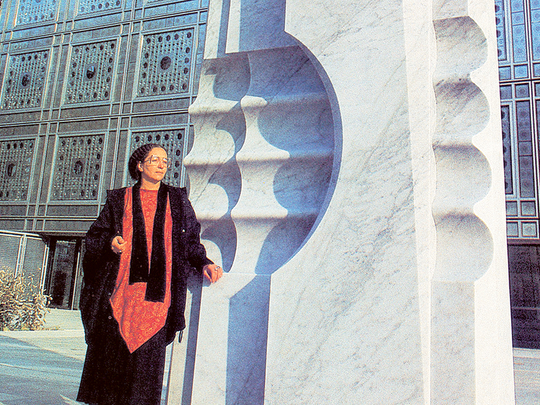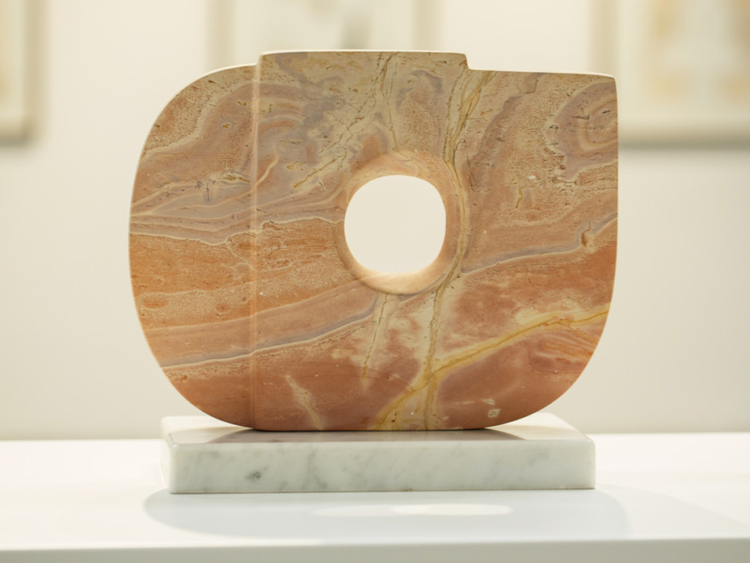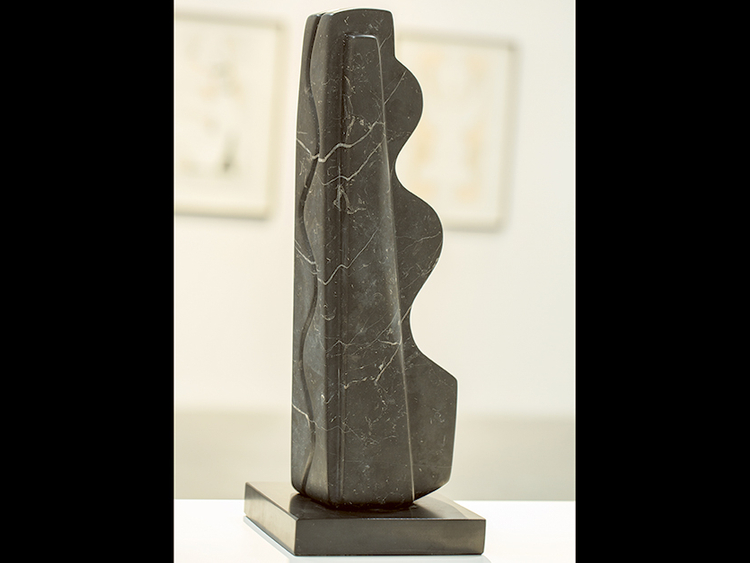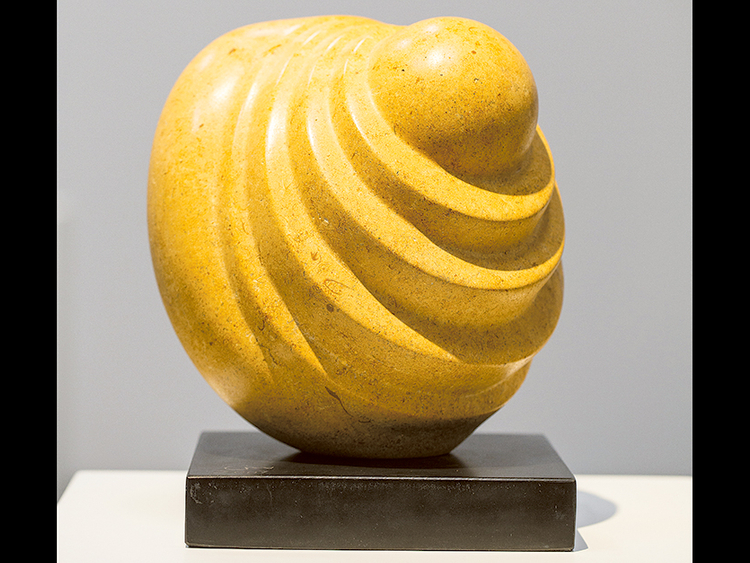
Ever since she can remember, Mona Saudi has been passionate about art, poetry and music. Defying her conservative family, she left her home in Amman at the age of 17 to make her dream of studying art in Paris come true. She spent a year in Beirut, where she met well-known artists, poets and intellectuals, such as Adonis, Paul Guiragossian and Michel Basbous, who became her friends.
She held her first exhibition of drawings in 1963 in a café in Beirut, and made enough money to buy a ticket to Paris, where she enrolled in the Ecole des Beaux-Arts. The Beirut-based Jordanian artist, who turns 70 this year, is one of the very few Arab women to pursue sculpture, and with her distinctive style she has carved a niche for herself in the history of modern Arab art.
Saudi combines organic and geometric forms to create abstract works that express themes of life force and creation. Her first sculpture, created in 1965 was titled “Mother/Earth”, and since then she has often returned to themes of fertility and growth. She has also created public sculptures for prestigious institutions, such as the Institut du Monde Arabe in Paris.
Her first exhibition in the UAE, “Poetry in Stone” features seven sculptures, created between 2003 and 2012, and a series of silk-screen prints of drawings made between 1976 and 1980. The sculptures, made from a variety of stone, such as black dolorite from Syria, Lebanese yellow stone, South American marble, African granite and Jordanian jade and pink limestone, illustrate the breadth and range of her vision.
Inspired by rivers, seeds, seagulls and the theme of mother and child, the sculptures convey her desire to create through her materials an organic connection to life itself. The silk-screen works, titled “Homage to Mahmoud Darwish” are inspired by the writings of the well-known Palestinian poet and Saudi’s lifelong friend. The soulful works, incorporating phrases from Darwish’s well-known poems relate clearly to the sculptural forms in her work with their graphic lines and totemic imagery.
Weekend Review travelled down memory lane with Saudi to learn about her life and her work. Excerpts:
How did you get interested in sculpture?
As a child I took long walks through the hills around Amman, where our house was surrounded by ancient ruins dating back millennia to the age of the Ammonites, the Edomites and the Nabataeans, who were all stone carvers. I felt and still feel that I belong to these ancestors, and to my Mother Earth. Later, in Paris I was inspired by the ancient Etruscan, Greek, African and Egyptian art I saw at the Louvre.
When I work with stone, I feel strong and secure and can sense the spiritual richness inside it. For me making a sculpture is like creating poetry in stone. It comes from my inner self and every work I create is like a piece of my soul.
Why did you run away from home at 17?
I took the decision to become an artist very early in life. My older brother’s death when I was just eight years old made me realise that life is very precious and we must live every moment fully. I believe that rather than talking about dreams one has to dare to act.
I left home without my father’s permission, because the girls in my family were not allowed to go to university or have a job except teaching in schools. But by breaking the rules, I charted a new path for all of them, opening the doors for them to go to university, try new careers and to study abroad. I hope that my work will similarly encourage young women artists in the region to believe in themselves and follow their dreams.
Why did you choose to go to Beirut?
At that time Beirut was a major cultural centre of the Arab world, where the progressive political environment, freedom of the press and freedom of artistic experimentation supported the development of a new modern culture. Artists, poets and intellectuals from around the region came to the city and despite the war, the atmosphere has not changed.
Please tell us about the inspiration behind some of the sculptures in this show.
My work is geometric and organic at the same time. I am interested in exploring ideas, such as the meaning of growth, and what is known as “takween” in Arabic and can be translated as creation or formation. “The Seagull” in marble is inspired by the seagulls that accompanied me on my epic journey to Paris; and “The Seed” is based on wheat and coffee grains.
“The Nile Obelisk” is inspired by the Egyptian concept of the obelisk, which is a spiritual form that joins the Earth to heaven. When you work with stone you discover how rich our Earth is; and these works are sculpted from different types of stone from different places.
Do you switch to drawing as a form of relaxation?
No, drawing is also a way of continuing my research of forms. I like to incorporate poems I love in my drawings, which is difficult to do in sculpture. I relate sculpture to poetry, as a centre of contemplation that creates rich vibrations in space and time. I use the same precision with my pen as I do with my chisel, so my works on paper have a sculptural look.
What challenges did you face as an Arab woman who wanted to be a sculptor in those times?
I never felt any discrimination because I always looked at myself as a human being. I respected myself and my art and believed in what I was doing, so I got great respect from everybody. Sculpting in stone is hard work, but I think women who work in the fields or look after cattle work harder. In this part of the world we have had powerful queens, such as Sheba and Cleopatra, so historically women have always been respected.
You have lived through times of great turmoil, including a civil war in Lebanon. How does your work remain so serene and balanced?
I do not like expressive art, and I do not like violence in life or in art. I like beauty and harmony and always want to feel the divinity of our existence and of the trees, birds and other creatures around us. There is already so much violence in our lives, so why repeat it in art. For me art is a moment of contemplation, of inner peace.
Jyoti Kalsi is an arts-enthusiast based in Dubai.
“Poetry in Stone” will run at Lawrie Shabibi gallery, Al Quoz, until July 16.













